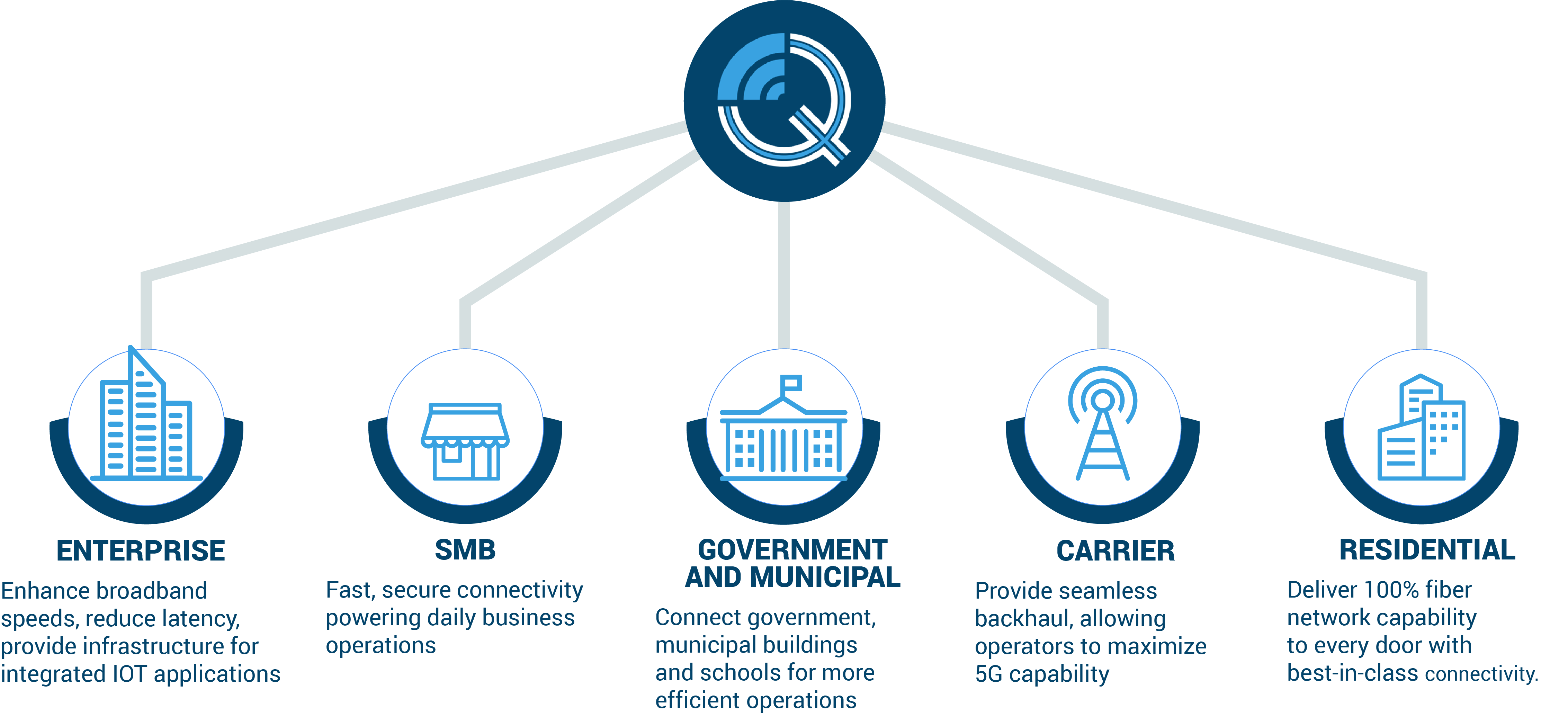Open Access Networks – flexible, futureproof and financially efficient

Telecommunications networks form the backbone of modern society, enabling seamless communication and access to information. As technology continues to evolve, the demand for faster, more reliable, and affordable internet connectivity is increasing exponentially. Open Access Networks (OANs) have emerged as a leading solution to address these demands and foster innovation in the telecommunications industry. OANs eventually will establish the backbone that enables the majority of true last mile connectivity.
While becoming more common in the U.S., open access is well established in the tower industry and in middle-mile and long-haul fiber networks in the United States. European networks have taken this a step further, being the first to drive this concept into last mile connectivity. Adoption is becoming more and more prevalent with 10M households expected to be passed by Open Access Networks in the next 5 years.
What are Open Access Networks and why are they needed?
Legacy last-mile networks in the United States were either DSL or Cable. As demand for data speed increased, these networks required upgrading. Fiber overbuilds were a preferred option for DSL networks whereas Cable networks have relied on technology upgrades. The pace of network upgrades continued to lag behind demand and hence a few new Internet Service Providers (ISPs) entered the market to build new fiber networks.
These networks are built in a single threaded manner, supporting a specific use case and in many instances, a specific brand on top. These networks traditionally provide a finite amount of capacity and introduced overbuild scenarios that are both costly and disruptive to municipalities. As legacy DSL, single use and capacity restrictive fiber and cable networks face technological obsolescence and high capital costs to rebuild its infrastructure, tenant economics have become increasingly attractive versus building and owning new infrastructure.
Ubiquity builds and operates high-capacity last-mile Open Access Fiber Networks designed to host multiple tenants who use the network to serve end-use customers and pay a lease rate to Ubiquity. In addition to hosting more than one traditional service provider tenant, OANs can have multiple non-ISP tenants using the network for other purposes, e.g., carriers, enterprises, etc. This essentially makes networks three dimensional – multiple uses as well as multiple providers serving this variety of last mile functions. In this case, a better definition of these networks is both multi-tenant and multi-access.
The attractiveness is not only on the build efficiency, but also on the commercial modeling. The cost of adding new tenants onto a network is minimal—new revenue largely accrues to the bottom line. Good for the community at large, this approach fosters innovation, improves service quality, and lowers costs for both operators and end-users. This ensures that the operator of the network can provide Lit and Dark Fiber services to all of their tenants to maximize revenue. This build flexibility leads to a maximized tenant and revenue diversification profile across the network.
Given attractive commercial economics, OANs drive higher penetration rates and higher profitability relative to single-purpose networks. These networks may provide a viable economic option for incumbents instead of spending billions of dollars in overbuilding or upgrading their legacy copper networks.
Futureproof and flexible
Multi-tenant, Multi-access Networks must be designed with flexibility and futureproofing in mind. From a flexibility perspective, OANs provide the maximum number of options to connect in and deploy new service. For those that want to manage their own networks, Ubiquity’s builds offer both a Lit and Dark connection option. In a Lit scenario, Ubiquity provides an active connection with a demarcation typical at the end user location. This allows tenants to immediately start selling services with little to no setup time. For the more advanced, like traditional carriers or for non-ISP uses like cell site connections, Ubiquity provides point to point Dark fiber strands and associated infrastructure to house partner equipment, allowing providers requiring network flexibility to make these networks in their own vision.
Futureproofing essentially boils down to capacity. As data traffic grows exponentially, the network must have the capacity to accommodate increased demand from applications that are not currently in the mainstream. Imagine building a network 20 years ago without the benefit of understanding the needs of 5G networks, real time use of video and limited latency needs for geo-location. Engineers need to plan for periodic upgrades and advancements to ensure that the infrastructure can handle emerging technologies and higher bandwidth requirements. Ubiquity futureproofs networks by maximizing fiber in the ground day one. These builds support a near-unlimited amount of future capacity when paired with active electronics providing signals.
It is clear that networks will need to continuously evolve to keep pace underlying commercial use cases. A key piece of this evolution will be the utilization of flexible, futureproof fiber assets in the form of Open Access Networks. Engineered and built by those who know networks best, these OANs will provide a healthy, robust backbone for future Smart Cities and Smart Buildings to thrive.

